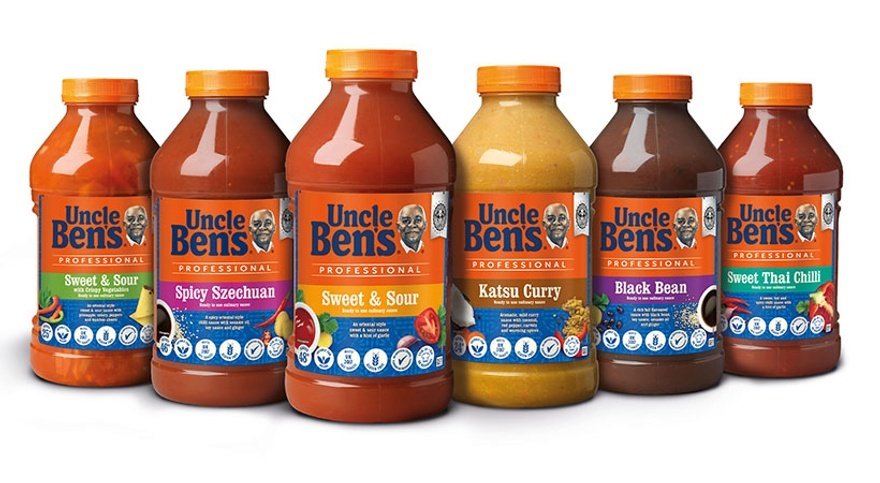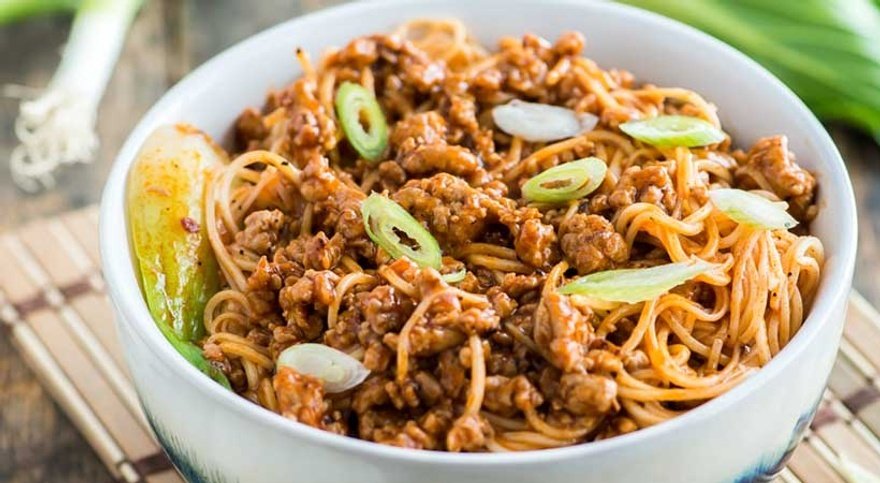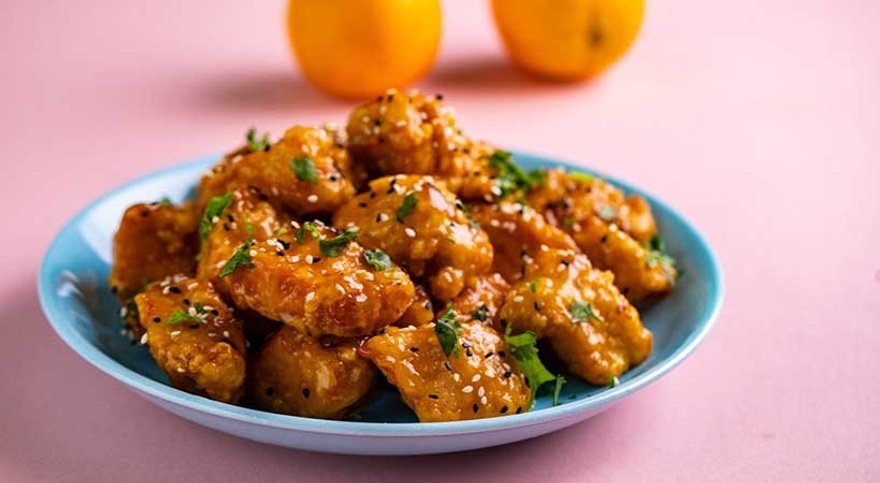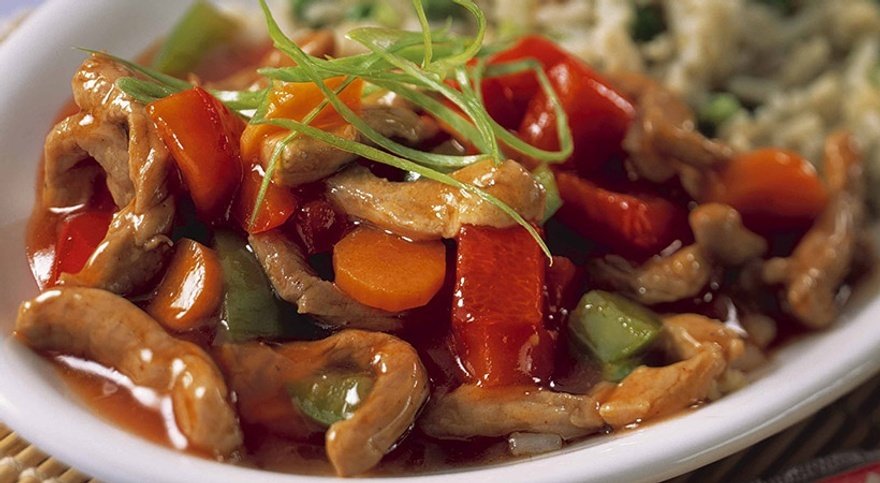The Year of the Rat beckons, and Anne Bruce has some tips on how to embrace the qualities associated with the rodent in Chinese tradition when planning a Chinese New Year menu
With Chinese dishes already incredibly popular in the UK, and consumers keen to join in the celebrations of the new lunar year, Chinese New Year can be an opportunity for restaurant operators, even if this type of cuisine isn't usually on the menu.
As the Year of the Rat dawns on 25 January, it is time to make use of some of the qualities associated with the rodent in Chinese tradition, such as intuition, resourcefulness, imagination and adaptability, and to wow your customers out of hibernation.
Intuition
Traditionally, Chinese food features five distinct flavours in order to bring harmony to a dish: spicy, salty, sweet, sour and bitter. These are all tastes with which chefs will be familiar, and thinking up a Chinese New Year menu could involve simply swapping out a kitchen's regular ingredients with something more Chinese-inspired. Examples could include substituting chilli flakes for Szechuan peppercorns; soy sauce or brine-pickled vegetables for salt; plum sauce for honey or syrups; balsamic or wine vinegar for rice vinegar; or replacing greens with bitter melon.
Chinese flavours can also simply be incorporated into a current menu, for example, by seasoning the meat and gravy in pies with oyster sauce or using it as a marinade for grilled or barbecued meats. This will greatly enhance the flavours and inject a rich umami taste without changing much of the recipe, says Maria Chong, managing director at Lee Kum Kee Europe. Another simple change is drizzling sesame oil onto soups, green salads and meat stews at the end of cooking, to add a nutty aroma to dishes.
Resourcefulness
As you put together a Chinese New Year menu, keep in mind the big picture and don't be daunted, recommends Dr Meng-Mei (Maggie) Chen, who is an assistant professor at Ecole Hôtelière de Lausanne.
Sarah Moor, brand manager for Lion at AAK Foodservice, agrees, and says that getting flavour balances right can take time and experience, so a ready-made base sauce is a great shortcut.
The range of six Uncle Ben's Professional ready-to-use sauces offer a similar shortcut to chefs, adds Alison Smith, product developer at Mars Global Food. The range is suitable for gluten-free diets and vegans and can be used to make classic dishes such as sweet and sour pork, curries and noodle stir-fries, as well as on-trend canapés, such as prawns with sweet chilli sauce and spicy Szechuan skewers.
Whether using a ready-made sauce or creating one from scratch, stir-fries are easy to manage and make a great addition to a menu as an entry point, recommends Chong.
Imagination
Ennevor Yap, director of the Chinese wholesale group Wing Yip, claims that Chinese New Year is the perfect time for caterers to try out something new.
"Chinese New Year creates an opportunity that catering operators can capitalise on, by expanding their Oriental food offering and appealing to today's consumers," he explains. "Whether in the form of one or two dishes added to an established offering, or as an entire bespoke Chinese-themed menu, Chinese New Year should encourage operators to get creative, providing new taste experiences for returning trade, and targeting new customers looking for more variety at mealtimes."
Chinese New Year, also known as the Spring Festival, is a sharing experience, Dr Chen says. It is about fun and feasting, sharing dishes and catching up with family and friends. Group sharing menus will be popular at this time of year and present a great opportunity for a chef to try something completely new, such as whole suckling pigs, Peking ducks or racks of lamb.
Rice is a key component of any Chinese meal, and Tilda's Fragrant Jasmine rice is an authentic sticky rice that can be prepared quickly and easily for large groups, suggests Annette Coggins, head of foodservice at Tilda UK. It can be cooked and chilled to use for fried rice and, as the sticky grains separate when re-heated, caterers see minimal wastage.
Tilda has also created some celebratory menu ideas for chefs, including duck breast with red curry-infused fragrant jasmine rice; Chinese claypot rice; Chinese prawn potsticker dumplings; and mango rice pudding.
Adaptability
It's important that chefs don't get caught up in the excitement of creating a for Chinese New Year menu and forget the basics. Dr Chen advises that dishes should look as good as they taste, as guests will be eager to share their special meal on social media. Bright and eye-catching food will be sure to rake in the likes on Instagram, providing free marketing for your brand.
And it's vital to nail your veggie offering. Vegetarians and vegans shouldn't feel short-changed, as there is a rich tradition of vegetable dishes in Chinese cuisine. When looking at a traditional Chinese dining table, there will be at least one vegetable dish to share, such as green beans, garlic broccoli stir-fry or spicy aubergine. And, of course, tofu is a perfect vegan-friendly substitute for any meat dish.
Don't worry about confining your celebratory menu to 25 January either, as Spring Festival is a two week-long celebration, running until 8 February, with different themed feasts on the different days.
As the Year of the Rat dawns, a year that is auspicious for discoveries and inventions, there has never been a better time for caterers to seize upon the sales opportunity and food inspiration that Chinese New Year offers.
The 15 days of Chinese New Year
Chinese New Year celebrations for the Year of the Rat fall between 24 January and 8 February in 2020. Clara Zhou, marketing manager of Lee Kum Kee, describes some of the special food traditions of what is known in China as the Spring Festival.
Lunar New Year's Eve, 24 January
Good fortune in the form of money is given by the older generation to the younger. Chicken is always served, and fish is eaten as the main part of the meal; fish symbolises a surplus at the end of the year. Dumplings are a traditional dish of the New Year's Eve celebration. They are a similar shape to the old Chinese currency, Yuan Bao, and therefore associated with wealth.
The Lunar New Year 25 January
A big feast is prepared for Chinese New Year's Day. Some Chinese families keep the tradition of the first dinner of the year being a vegetarian meal. Eating noodles on Chinese New Year's Day symbolises good health and longevity. It is also tradition to braise mushrooms and lettuce in oyster sauce during Chinese New Year for a year of fortune ahead, as ‘lettuce' in Chinese is ‘san choy', which rhymes with ‘making money'.
Day three in the Lunar Calendar, 27 January
The third day is called ‘red mouth day', which means ‘the argument day'. Most families will stay home to avoid having arguments.
Day four in the Lunar Calendar, 28 January
The fourth day is when leftovers from the previous feasts are eaten.
Day five in the Lunar Calendar, 29 January
This day is believed to be the birthday of the God of Fortune, celebrated with another large feast.
Day eight in the Lunar Calendar, 30 January
This is the day that businesses reopen. The word ‘eight' has a similar pronunciation to ‘fortune' in Chinese. Day eight is celebrated with a feast that is laid on at work.
Day 15 in the Lunar Calendar, Yuan Xiao, 8 February
Chinese New Year celebrations draw to a close on Yuan Xiao, which is also called the Lantern Festival and Chinese Valentine's Day. People write poems and riddles on lanterns. Glutinous rice balls with sweet fillings, such as black sesame seed paste, red beans or lotus seed paste are eaten. All lucky money (red packets) collected over the 15 days of Chinese New Year can be unsealed, and children can bank their earnings.
Suppliers
AAK Foodservice www.lionsauces.co.uk
Ecole Hôtelière de Lausanne www.ehl.edu
Lee Kum Kee Europe www.LKKprofessional.com
Mars Global Food www.aimiafoods.com
Tilda www.tildafoodservice.com
Wing Yip www.wingyip.com
Continue reading
You need to create an account to read this article. It's free and only requires a few basic details.
Already subscribed? Log In













